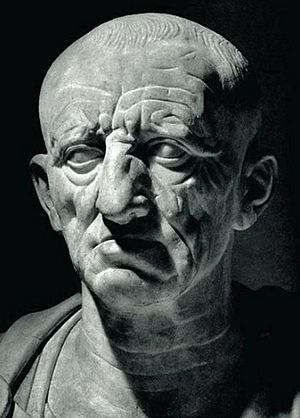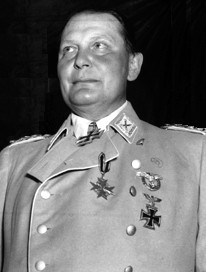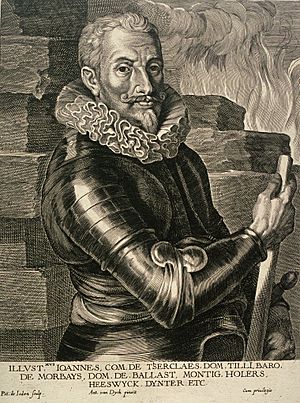Bellum se ipsum alet facts for kids

The Latin phrase bellum se ipsum alet (which means "The war will feed itself") or bellum se ipsum alit ("The war feeds itself") describes a military plan. It means that armies get their food and money mainly from the places they have taken over. This strategy often caused many people in those areas to starve. The phrase was first used by an ancient Roman leader named Cato the Elder. It is most famous for being used during the Thirty Years' War (1618–1648).
Contents
The phrase "The War Feeds Itself"

The phrase bellum se ipsum alet was first written down by the Roman historian Livy. He said that Cato the Elder used it in 195 BC. Cato was a Roman statesman. According to Livy, Cato said this during the Roman conquest of Hispania (which is modern-day Spain and Portugal). Cato refused to buy more supplies for his army there. Instead, he made the army live off the land.
The saying became very well known during the Thirty Years' War. Friedrich Schiller wrote a play called Wallenstein. In the play, a general named Johann Ludwig Hektor von Isolani says these words. He explains that the war gets what it needs from the land and its people:
Illo: Ei was! Es war ein gutes Jahr, der Bauer kann / Schon wieder geben! So what! It was a good year, the peasant is able to give again! Questenberg: Ja, wenn Sie von Herden / Und Weideplätzen reden, Herr Feldmarschall - Yes, if you are talking about herds and pasture grounds, field marshal Sir! - Isolani: Der Krieg ernährt den Krieg. Gehn Bauern drauf / Ei, so gewinnt der Kaiser mehr Soldaten. The war nourishes the war. Peasants die, ah! This way the Emperor gains more soldiers. Questenberg: Und wird um so viel Untertanen ärmer! And loses so many of his subjects! Isolani: Pah! Seine Untertanen sind wir alle! Pah! We all are his subjects!
How the Strategy Worked
During the Thirty Years' War
Before the Thirty Years' War, armies were usually paid for by special war taxes. But the armies in this war were very large. The money from taxes was not enough. So, leaders had to find other ways to pay for their soldiers. This led to the idea of "the war feeds itself."
This strategy was used in two main ways. First, armies took food directly from the areas they controlled. Later, they also took money from these areas to pay the soldiers.
In 1623, Johann Tserclaes, Count of Tilly, a general for the Catholic League, used this plan. He made the people in the conquered area of Hersfeld provide supplies. He demanded very high amounts. If people did not pay, his soldiers would take things by force.
In 1625, Albrecht von Wallenstein promised the Holy Roman Emperor Ferdinand II that he could raise an army and pay for it himself. Wallenstein was allowed to use the resources of occupied lands. However, he was not supposed to take money by force without the Emperor's permission. But this rule was often ignored. Wallenstein's army was fed and paid entirely by taking things from the land and from war loot. Soon, all armies in the war started using this "bellum se ipsum alet" method.
The occupied areas were divided into "contribution districts." People in these districts were forced to give supplies and money. This was done by military force and by local leaders who were made to help. This strategy ruined many of these areas. Many German towns were in debt until the 1700s because of the money they had to borrow during the Thirty Years' War.
During World War II

During World War II, Nazi Germany invaded the Soviet Union in 1941. The Nazis expected to get many resources from these lands. But they did not get as much as they thought. This was because the Soviet economy already had problems. Also, the fighting caused a lot of damage.
So, Hermann Göring, a top Nazi leader, put rules in place. These rules limited food for the local people. This was to make sure there was enough food for Germany and its army. Göring knew this would cause terrible hunger. In 1941, he said there would be "the largest starvation since the Thirty Years' War" in the occupied areas. In 1942, he clearly stated that the Nazi plan in these lands was bellum se ipsum alet.
See also
 In Spanish: Bellum se ipsum alet para niños
In Spanish: Bellum se ipsum alet para niños
- Scorched earth, a strategy used to stop "bellum se ipsum alet" from working.
Sources


